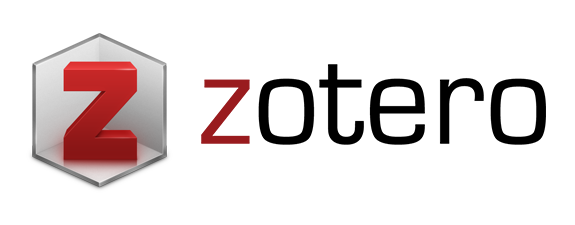The Implementation of K-Means Clustering on E-Learning Feature Development for Outstanding Student Recommendation
Abstract
Schools still need to carry out the process of selecting outstanding students, which has several weaknesses. The data processing process takes a long time and tends to result in human decision-making errors. Although the selection of outstanding students is essential in giving awards and praise to students who excel, the school's current method could be more optimal. The process often takes a long time and requires a lot of human resources to collect and process student data, which can disrupt the school's daily operations. this research aims to group and select students as outstanding students by implementing the k-means clustering method and utilizing E-Learning features. The data used in this study are 30 samples of MIN 2 Malang City student grades, five criteria and grouped into 3 clusters. Experiments conducted are the best criteria weight, the best centroid, the best radius and the best number of clusters to obtain groups (clusters) of students according to the ability and assessment of students. The experimental results show that the best criterion weight is the 4th criterion weight with the percentage of criterion weights: K1 = 25%, K2 = 20%, K3 = 25%, K4 = 15% and K5 = 15%. The best centroid is the 1st test with a Percussion value of 97%, Recall of 98%, Specificity of 98% and Accuracy of 98% obtained in the 1st test. The best radius is obtained in the first and fifth tests with the farthest distance of 10.42. The best number of clusters from the trial results with division into three groups and four obtained is 3 clusters with Precision of 79%, Recall of 78%, Specificity of 89% and Accuracy of 87%. Then the implementation of the k-means method with the system resulted in grouping the highest scores (C1) in as many as 21 students, medium scores (C2) in as many as 5 students and low scores (C3) in as many as 4 students. C1 = 21 students with student data (2, 4, 6, 7, 8, 12, 13, 14, 15, 16, 17, 18, 19, 21, 24, 25, 26, 27, 28, 29, 30), C2 = 5 students with student data (9, 10, 20, 22, 23) and C3 = 4 students with student data (1, 3, 5, 11).
Keywords
Full Text:
PDFReferences
E. R. Siagian, “Implementasi Metode Profile Matching untuk Penentuan Mahasiswa Berprestasi,” MEANS (Media Inf. Anal. dan Sist.), vol. 5, no. 1, pp. 61–66, 2020, doi: 10.54367/means.v5i1.752.
H. Haviluddin, S. J. Patandianan, G. M. Putra, N. Puspitasari, and H. S. Pakpahan, “Implementasi Metode K-Means Untuk Pengelompokkan Rekomendasi Tugas Akhir,” Inform. Mulawarman J. Ilm. Ilmu Komput., vol. 16, no. 1, pp. 13-18, 2021, doi: 10.30872/jim.v16i1.5182.
S. S. Nagari and L. Inayati, “Implementation of Clustering Using K-Means Method to Determine Nutritional Status,” J. Biometrika dan Kependud., vol. 9, no. 1, pp. 62-68, 2020, doi: 10.20473/jbk.v9i1.2020.62-68.
A. A. Aldino, D. Darwis, A. T. Prastowo, and C. Sujana, “Implementation of K-Means Algorithm for Clustering Corn Planting Feasibility Area in South Lampung Regency,” J. Phys. Conf. Ser., vol. 1751, no. 1, pp. 1-9, 2021, doi: 10.1088/1742-6596/1751/1/012038.
J. Hutagalung, N. L. W. S. R. Ginantra, G. W. Bhawika, W. G. S. Parwita, A. Wanto, and P. D. Panjaitan, “COVID-19 Cases and Deaths in Southeast Asia Clustering using K-Means Algorithm,” J. Phys. Conf. Ser., vol. 1783, no. 1, pp. 1-6, 2021, doi: 10.1088/1742-6596/1783/1/012027.
A. Rohmah, F. Sembiring, and A. Erfina, “Implementasi Algoritma K-Means Clustering Analysis Untuk Menentukan Hambatan Pembelajaran Daring (Studi Kasus: Smk Yaspim Gegerbitung,” Sistem Informasi dan Manajemen Informatika, vol. 1, no. 1, pp. 290–298, 2021.
Z. Nabila, A. Rahman Isnain, and Z. Abidin, “Analisis Data Mining Untuk Clustering Kasus Covid-19 Di Provinsi Lampung Dengan Algoritma K-Means,” J. Teknol. dan Sist. Inf., vol. 2, no. 2, pp. 100-108, 2021.
B. Karlina and A. M. Sanoyo, “Pengaruh Cluster Emiten terhadap Return Saham JSX Berbasis Parameter Rasio Analisa Fundamental,” J. Akuntansi, Keuangan, dan Manaj., vol. 2, no. 4, pp. 279–291, 2021, doi: 10.35912/jakman.v2i4.294.
R. K. Dinata, S. Safwandi, N. Hasdyna, and N. Azizah, “Analisis K-Means Clustering pada Data Sepeda Motor,” INFORMAL Informatics J., vol. 5, no. 1, pp. 10-17, 2020, doi: 10.19184/isj.v5i1.17071.
S. P. Tamba, F. T. Kesuma, and Feryanto, “Penerapan Data Mining Untuk Menentukan Penjualan Sparepart Toyota Dengan Metode K-Means Clustering,” J. Sist. Inf. dan Ilmu Komput. Prima (JUSIKOM PRIMA), vol. 2, no. 2, pp. 67–72, 2020, doi: 10.34012/jusikom.v2i2.376.
F. Amin, D. S. Anggraeni, and Q. Aini, “Penerapan Metode K-Means dalam Penjualan Produk Souq.Com,” Appl. Inf. Syst. Manag., vol. 5, no. 1, pp. 7–14, 2022, doi: 10.15408/aism.v5i1.22534.
N. Sirait, “Implementasi K-Means Clustering Pada Pengelompokan Mutu Biji Sawit,” J. Pelita Inform., vol. 16, no. 4, pp. 368–372, 2017.
D. Xia, F. Ning, and W. He, “Research on Parallel Adaptive Canopy-K-Means Clustering Algorithm for Big Data Mining Based on Cloud Platform,” J. Grid Comput., vol. 18, no. 2, pp. 263–273, 2020, doi: 10.1007/s10723-019-09504-z.
N. Nur Afidah, “Penerapan Metode Clustering dengan Algoritma K-means untuk Pengelompokkan Data Migrasi Penduduk Tiap Kecamatan di Kabupaten Rembang,” Prism. Pros. Semin. Nas. Mat., vol. 6, pp. 729–738, 2023, [Online]. Available: https://journal.unnes.ac.id/sju/index.php/prisma/
W. Afifi, D. R. Nastiti, and Q. Aini, “Clustering K-Means Pada Data Ekspor (Studi Kasus: Pt. Gaikindo),” Simetris J. Tek. Mesin, Elektro dan Ilmu Komput., vol. 11, no. 1, pp. 45–50, 2020, doi: 10.24176/simet.v11i1.3568
DOI: https://doi.org/10.15408/aism.v7i1.33544
Refbacks
- There are currently no refbacks.

This work is licensed under a Creative Commons Attribution-ShareAlike 4.0 International License.
EDITORIAL ADDRESS:
Department of Information Systems, Faculty of Science and Technology,
Universitas Islam Negeri (UIN) Syarif Hidayatullah Jakarta
Faculty of Science and Technology Building, 3rd Floor, 1st Campus, Universitas Islam Negeri (UIN) Syarif Hidayatullah Jakarta
Jl. Ir. H. Juanda No. 95, Ciputat Timur, Kota Tangerang Selatan, Banten 15412, Indonesia.
Tlp/Fax: +622174019 25/+62217493315.
E-mail: aism.journal@apps.uinjkt.ac.id, Website: https://journal.uinjkt.ac.id/index.php/aism

This work is licensed under a Creative Commons Attribution-ShareAlike 4.0 International License.
Applied Information System and Management (AISM) | E-ISSN: 2621-254 | P-ISSN: 2621-2536
https://journal.uinjkt.ac.id/index.php/aism






